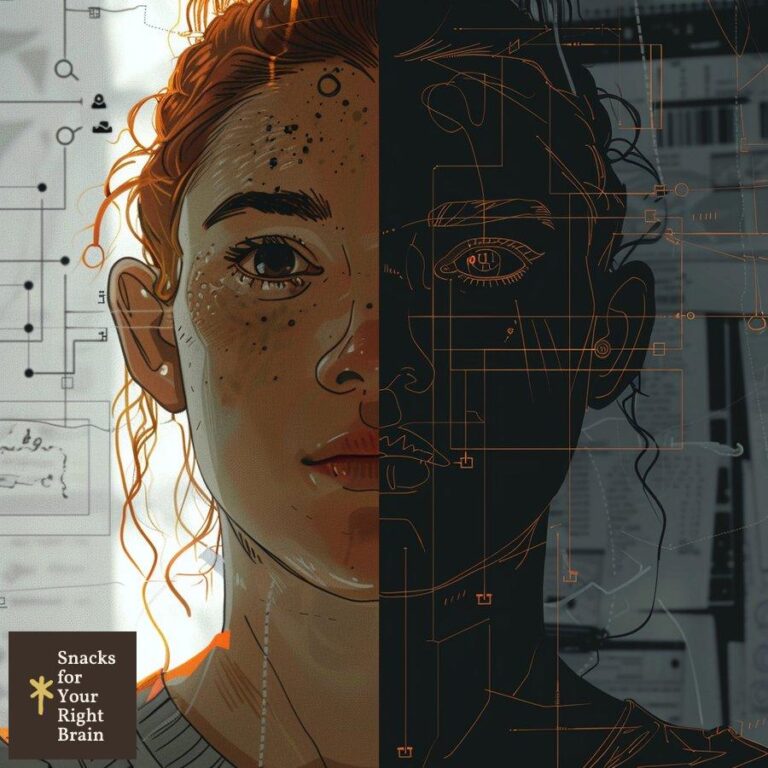What Is Empathy in a Short Story
What is empathy in short story writing?
Empathy in short story writing refers to the ability of the author to evoke a deep understanding and connection between characters and readers. It involves creating characters whose emotions and experiences resonate with readers, allowing them to feel what the characters feel. This emotional engagement is essential for crafting compelling narratives that leave a lasting impact.
Empathy can be understood through three core entities:
-
Character: The individual in the story whose experiences and emotions are explored.
-
Reader: The audience who engages with the story, interpreting and feeling the characters’ emotions.
-
Narrative: The structure and style of the story that conveys the characters’ experiences and emotions.
The relationship among these entities is crucial; the author must skillfully weave the narrative to bridge the gap between character and reader, fostering a sense of shared experience. This connection can lead to greater understanding of diverse perspectives, ultimately enriching the reader’s emotional landscape.
How do authors develop empathetic characters?
Creating empathetic characters requires a deep understanding of human emotions and motivations. Authors can employ several techniques to develop characters that resonate with readers.
*Character Backstory*
A well-crafted backstory provides context for a character’s actions and emotions. By revealing past experiences, authors allow readers to understand the character’s motivations and struggles, fostering empathy.
*Complexity and Flaws*
Empathetic characters are often complex and flawed. They exhibit a range of emotions and make mistakes, making them relatable. Readers are more likely to empathize with characters who reflect their own imperfections.
*Internal Conflict*
Highlighting a character’s internal struggles can evoke empathy. When readers witness a character grappling with conflicting emotions or moral dilemmas, they are drawn into the character’s experience, fostering a deeper connection.
*Relatable Situations*
Placing characters in situations that mirror real-life challenges can enhance empathy. Readers are more likely to connect with characters facing issues such as loss, love, or identity crises, as these themes resonate universally.
Which narrative techniques enhance empathy in short stories?
Narrative techniques play a vital role in enhancing empathy within short stories. Authors can employ various strategies to create a more immersive and emotionally engaging experience for readers.
*Show, Don’t Tell*
This technique emphasizes depicting emotions through actions, dialogue, and sensory details rather than simply stating them. For example, instead of saying a character is sad, an author might describe their trembling hands or the way they avoid eye contact, allowing readers to infer the character’s emotional state.
*Stream of Consciousness*
Utilizing a stream of consciousness technique allows readers to experience a character’s thoughts and feelings in real-time. This technique creates intimacy, as readers gain direct access to the character’s internal world, fostering empathy.
*Symbolism and Imagery*
Symbolism and imagery can evoke emotions and enhance understanding. For instance, a character’s journey through a storm may symbolize their emotional turmoil. Vivid imagery can paint a picture that resonates with readers, deepening their emotional connection.
Why is point of view crucial for creating empathy?
Point of view significantly influences how empathy is established in a short story. The choice of perspective shapes the reader’s relationship with characters and their understanding of the narrative.
*First-Person Perspective*
A first-person perspective allows readers to experience the story through the eyes of the narrator. This intimate connection fosters empathy, as readers are privy to the character’s thoughts, feelings, and motivations.
*Third-Person Limited Perspective*
In a third-person limited perspective, the narrator conveys the thoughts and emotions of a single character. This approach provides insight into the character’s internal struggles while maintaining some narrative distance, allowing readers to empathize without being overwhelmed.
*Third-Person Omniscient Perspective*
This perspective offers a broader view of multiple characters’ thoughts and emotions. While it can provide a more comprehensive understanding of the narrative, it may dilute empathy for individual characters. Balancing the insights offered by this perspective is essential for maintaining emotional engagement.
How does empathy impact the reader’s experience?
Empathy significantly shapes the reader’s experience, influencing how they engage with the story and its characters. When readers can empathize with characters, they are more likely to become emotionally invested in the narrative.
*Emotional Resonance*
Empathetic storytelling creates emotional resonance, allowing readers to feel the characters’ joys, sorrows, and struggles. This connection can lead to catharsis, where readers experience a release of emotions through the narrative.
*Increased Understanding*
Empathy fosters understanding of diverse perspectives. Readers exposed to characters from different backgrounds or experiences can gain insight into lives they may not encounter in their own. This understanding can promote compassion and awareness of social issues.
*Motivation for Action*
Empathetic narratives can inspire readers to take action. When readers connect emotionally with characters facing challenges, they may feel compelled to advocate for change or support causes related to the characters’ experiences.
What role does dialogue play in fostering empathy?
Dialogue is a powerful tool for fostering empathy in short stories. Through conversations between characters, authors can reveal emotions, motivations, and conflicts that resonate with readers.
*Authenticity*
Authentic dialogue reflects how people communicate in real life, enhancing relatability. When characters speak in a way that feels genuine, readers are more likely to connect with their emotions and experiences.
*Conflict and Resolution*
Dialogue can highlight conflicts and resolutions between characters. By showcasing differing perspectives, authors can illustrate the complexity of human relationships, allowing readers to empathize with multiple viewpoints.
*Subtext*
Subtext in dialogue adds depth to conversations. Characters may say one thing while meaning another, creating tension and complexity. This layered communication can evoke empathy as readers decipher the underlying emotions and motivations.
How can writers balance empathy and plot development?
Balancing empathy and plot development is essential for creating a compelling narrative. Writers must ensure that character emotions enhance the plot without overshadowing it.
*Integrating Character Arcs*
Character arcs should align with the plot’s progression. As characters face challenges and grow, their emotional journeys should reflect the narrative’s direction. This integration fosters empathy while driving the plot forward.
*Pacing and Emotional Beats*
Maintaining a balance between action and emotional moments is crucial. Writers can use pacing to create emotional beats that resonate with readers while advancing the plot. Strategic placement of empathetic moments can heighten tension and engagement.
*Avoiding Manipulation*
Writers should avoid manipulating readers’ emotions for the sake of plot. Authenticity in character experiences fosters genuine empathy, while contrived emotional moments can alienate readers. Striking a balance ensures that empathy enhances the narrative rather than detracts from it.
Which classic short stories exemplify empathetic storytelling?
Several classic short stories exemplify empathetic storytelling through their rich character development and emotional depth. Here are a few notable examples:
| Title | Author | Key Themes |
|---|---|---|
| “The Gift of the Magi” | O. Henry | Sacrifice, love, and irony |
| “A Rose for Emily” | William Faulkner | Isolation, tradition, and change |
| “The Lottery” | Shirley Jackson | Conformity, tradition, and horror |
| “The Yellow Wallpaper” | Charlotte Perkins Gilman | Mental health, gender roles, and oppression |
These stories showcase how authors craft characters and narratives that evoke empathy, allowing readers to connect with the characters’ experiences and emotions.
How does empathy function across different short story genres?
Empathy functions differently across various short story genres, adapting to the conventions and expectations of each. Understanding these nuances can enhance a writer’s ability to evoke empathy effectively.

*Literary Fiction*
In literary fiction, empathy often arises from deep character exploration and emotional complexity. Authors focus on the inner lives of characters, creating nuanced portrayals that resonate with readers.
*Science Fiction and Fantasy*
In speculative genres, empathy can be cultivated through relatable themes and characters, even in fantastical settings. Writers can draw parallels between the characters’ experiences and real-world issues, allowing readers to empathize despite the genre’s imaginative elements.
*Horror*
Horror stories may evoke empathy through the vulnerability of characters facing terrifying situations. By developing relatable characters, authors can create emotional stakes that resonate with readers, making the horror more impactful.
What are the challenges in writing empathetic short stories?
Writing empathetic short stories presents several challenges that authors must navigate to create authentic connections between characters and readers.
*Avoiding Stereotypes*
Authors must be cautious of relying on stereotypes when developing characters. Stereotypical portrayals can undermine empathy, as they reduce characters to one-dimensional figures. Instead, creating multifaceted characters allows for deeper emotional connections.
*Balancing Emotion and Plot*
Striking a balance between emotional depth and plot progression can be challenging. Authors must ensure that character emotions enhance the narrative without becoming overwhelming or distracting from the story’s core.
*Maintaining Authenticity*
Authenticity is crucial for fostering empathy. Authors must draw from genuine experiences and emotions to create relatable characters. Failing to do so can lead to disconnection, as readers may find it difficult to empathize with contrived portrayals.
How does the psychological basis of empathy inform literary techniques?
The psychological basis of empathy informs various literary techniques that authors can utilize to enhance emotional engagement in their stories.
*Mirror Neurons*

Research on mirror neurons suggests that individuals often mimic the emotions of others, leading to empathetic responses. Authors can leverage this concept by crafting characters whose emotions are vividly portrayed, allowing readers to “mirror” those feelings.
*Theory of Mind*
The theory of mind refers to the ability to understand that others have thoughts, beliefs, and emotions different from one’s own. Authors can create characters with distinct perspectives, allowing readers to engage with diverse viewpoints and fostering empathy.
*Emotional Contagion*
Emotional contagion occurs when individuals absorb the emotions of others. By depicting characters’ emotions authentically, authors can evoke similar feelings in readers, enhancing their empathetic experience.
Can empathetic short stories drive social change?
Empathetic short stories have the potential to drive social change by raising awareness of important issues and fostering understanding among readers.

*Awareness of Social Issues*
Empathetic narratives can illuminate social injustices and marginalized voices. By portraying characters facing systemic challenges, authors can encourage readers to reflect on societal issues and consider their implications.
*Inspiring Action*
Stories that evoke empathy can inspire readers to take action. When readers connect emotionally with characters’ struggles, they may feel compelled to advocate for change or support relevant causes, amplifying the story’s impact.
*Building Compassionate Communities*
Empathetic storytelling can foster compassion and understanding within communities. By encouraging readers to engage with diverse perspectives, authors can promote dialogue and collaboration, ultimately driving social change.
What writing exercises can improve empathetic storytelling skills?
Improving empathetic storytelling skills requires practice and intentionality. Here are several writing exercises that can help authors develop their ability to evoke empathy.
*Character Journals*
Encourage writers to create journals for their characters, detailing their thoughts, feelings, and experiences. This exercise helps authors delve deeper into their characters’ emotions, enhancing their ability to portray empathy.
*Perspective Shifts*
Challenge writers to rewrite a scene from multiple characters’ perspectives. This exercise encourages understanding of different viewpoints and fosters empathy by highlighting the complexities of human relationships.
*Emotion Mapping*
Authors can create emotion maps for their characters, identifying key emotional moments throughout the story. This exercise helps writers visualize the emotional journey, ensuring that empathy is woven throughout the narrative.
How do cultural differences affect empathy in short stories?
Cultural differences play a significant role in shaping empathy within short stories. Understanding these nuances can enhance a writer’s ability to connect with diverse audiences.
*Cultural Context*
Cultural context influences how characters express emotions and navigate relationships. Authors must consider cultural norms and values when developing characters to ensure authenticity and relatability.
*Universal Themes*
While cultural differences exist, certain themes are universally relatable. Authors can focus on these commonalities, such as love, loss, and identity, to foster empathy across cultural boundaries.
*Cultural Sensitivity*
Writers should approach cultural representation with sensitivity and respect. Engaging with diverse perspectives and experiences can enrich storytelling and promote empathy among readers from different backgrounds.
What is the relationship between empathy and emotional authenticity in writing?

The relationship between empathy and emotional authenticity is foundational in storytelling. Authentic emotions resonate with readers, fostering a deeper connection to characters and their experiences.
*Genuine Emotion*
Authenticity in writing stems from genuine emotional experiences. When authors draw from their own feelings or observations, they can create characters and narratives that resonate with readers, enhancing empathy.
*Relatable Experiences*
Characters who experience authentic emotions are more relatable. Readers are more likely to empathize with characters whose struggles reflect their own, creating a shared emotional experience that enriches the narrative.
*Trust and Connection*
Emotional authenticity builds trust between the author and the reader. When readers perceive characters as genuine, they are more likely to engage with the story on a deeper level, fostering empathy and emotional investment.
In conclusion, empathy in short story writing is a multifaceted concept that involves the careful crafting of characters, narratives, and emotional experiences. By employing various techniques and understanding the psychological basis of empathy, authors can create compelling stories that resonate with readers, driving emotional engagement and fostering understanding across diverse perspectives.






